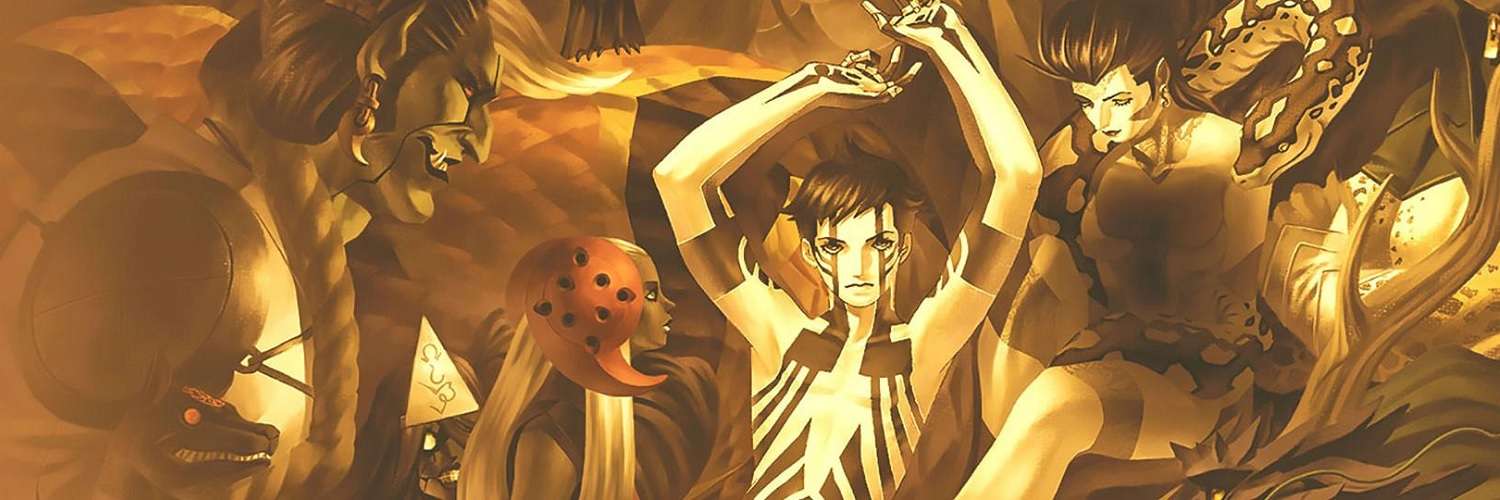
Shin Megami Tensei III Nocturne HD Remaster PC Review
It has been a long time since I imported my American copy of Shin Megami Tensei III: Nocturne and played through it. More than 15 years in fact (late 2004). The Japanese series had been quiet for a few years in Japan until the announcement of the third instalment. To help gain attention in the West, since Nocturne was the first main entry in the series to get an English translation, Atlus managed to get the licence to use Dante in the game, and so the cover had plastered “Featuring Dante from the Devil May Cry Series.” to lure in action fans. This was a different game compared to Capcom’s character action series, so I am not sure how much of a shock those people had when buying the game. That said, I do remember this Japanese RPG being quite the challenge, getting my arse kicked by a few bosses (screw you, Matador!). A lot has changed since then, even for Atlus, as the once spin-off series to Shin Megami Tensei, Persona, is now Atlus’ most popular game, leaving the mainline games lingering behind in popularity. Still, this series is often darker themed and more challenging – it has its place in the catalogue of Japanese RPGs that ruled the PS2 era, but how is it now in 2021?
The game’s story is just as fascinating now as it was back then. This is thanks to the unique grim narrative and setting that slots in some philosophical religious undertones – what other game has the world ending after around 30 minutes of game time, killing off millions of people and having the player survive, then rebirthed as a Demi-Fiend, basically half-human, half-demon protagonist by some old lady and a young kid dressed in black? Yeah, it’s crazy. It all starts with the normal high school kid who ends up inside an abandoned hospital just as the Conception happens. This event is the destruction and rebirth of the world, which a secret organisation had planned to perform for some time. Your teacher ends up tricking you to see her in hospital, but she does it to protect her key students from this catastrophe. The world is now transformed into a demon-infested land and it is down to you to survive in the new world with the new powers that come from transforming into the Demi-Fiend.
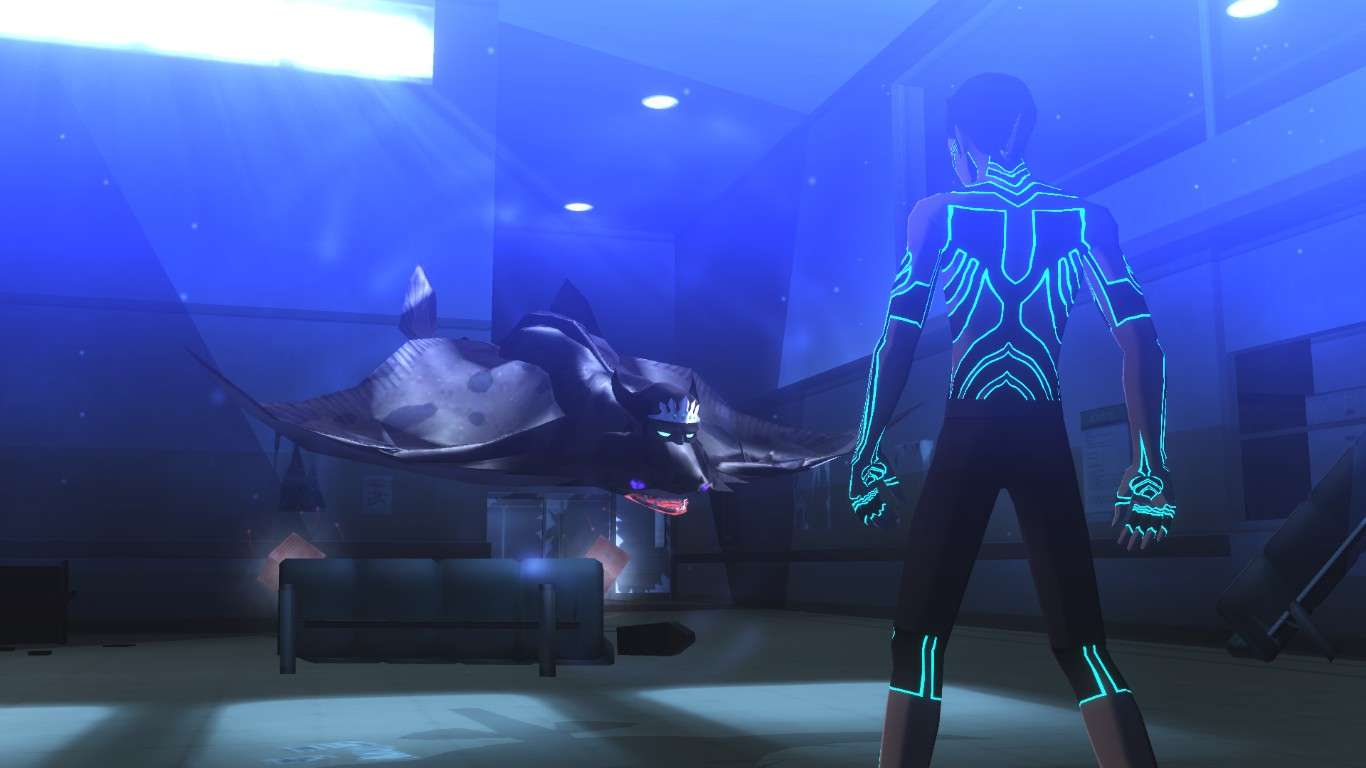
The story is presented in a low key manner than something like the Persona games. Cutscenes are kept to a minimum, so most time is spent in the gameplay rather than watching things unfold during lengthy dialogue scenes. That is not to say this is only a snack-sized story to digest, there is actually quite a focus on the interactions with the views of other demons and the dialogue choices you make throughout the game will change how the world will be shaped through various character’s philosophies. It makes it different from the traditional JRPGs that focus on team members and their struggles to save the world. This is more isolating, one person and his impact on the rebirth of a new world. What does he do with these newfound powers and the acceptance or rejection that awaits him on his journey for survival and power against the other demonic presences that have formed here? Whatever is decided during the adventure will lead to one of the six game endings across this 45+ hour JRPG.
Most of the time spent with Nocturne reveals its classic design of moving from one area to the next and fighting foes in the process. The environment and dungeon designs are empty, the typical PlayStation 2 design that stands out so much when compared to today’s games. It is more about the themes used around the walls and ground of the world that gives it a unique vibe. The new world of Tokyo has been turned into a wasteland filled with abandoned towns that host a few human ghosts but mainly overridden with demons going about as if everything is normal. Jumping into the early dungeons, it is clear these things are designed not to be complex. These are bolted together in blocks, chunks of shapes to build a map for the player to get through. As the later dungeons appear, the designers have thought of ways to throw in puzzles or other gimmicks to get them to explore the dungeons. This does mean the exploring gets a bit more complex, more puzzling with maze designs, but it is still within the confines of those PS2 style designs. The biggest dungeon is the optional Labyrinth of Amala, a dungeon built up of five sections that will test the player’s skill in exploring, but also battle, as to access each section requires defeating some of the game’s toughest boss fights – Oh, Matador, how you are still a bastard so early on in the game!
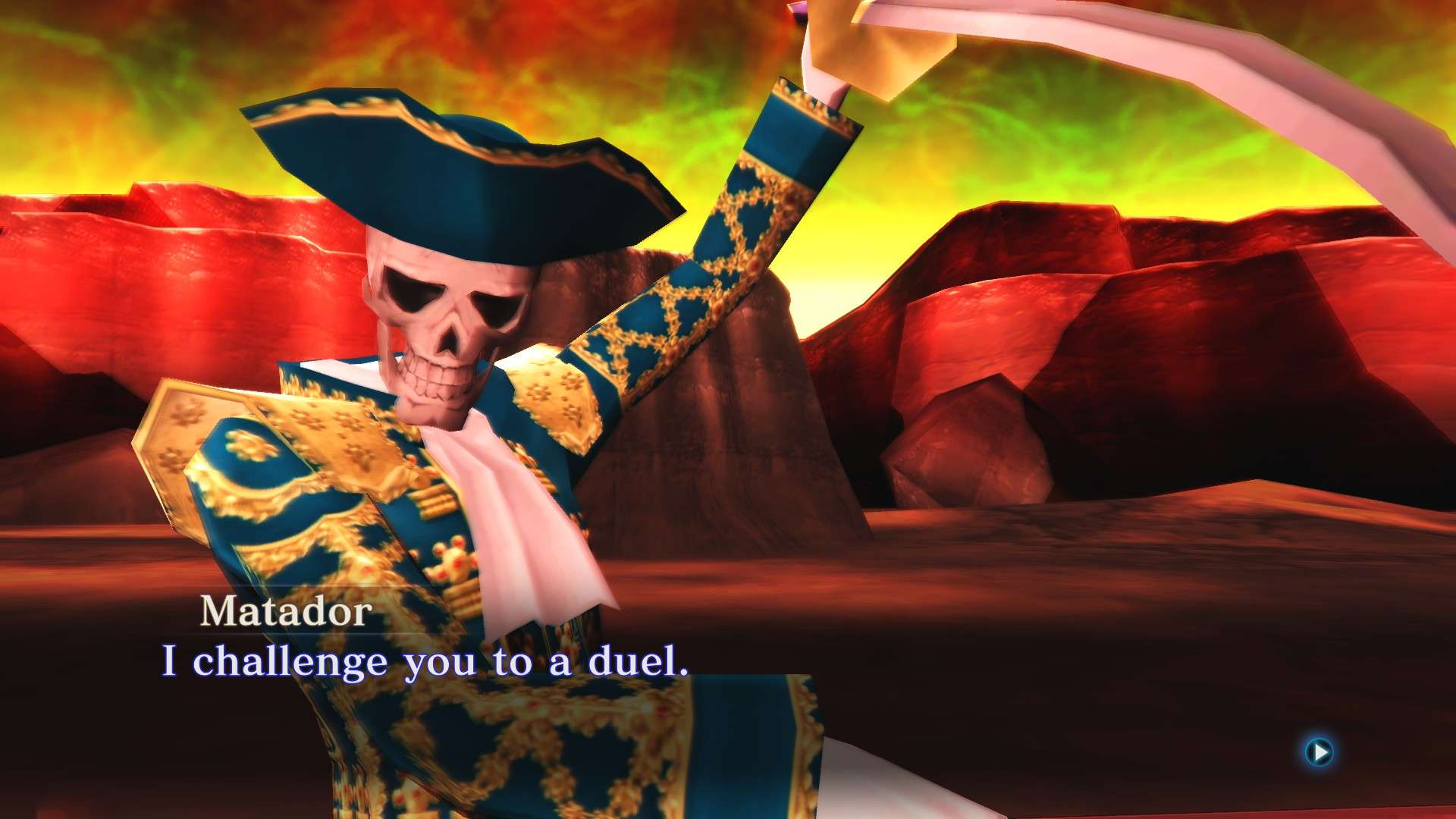
Battles come thick and fast with such a high encounter rate for random battles. Players can tell when a battle is about to hit, as the compass on the bottom left of the screen increases to a red colour as a warning. Nocturne’s fights use a system dubbed “Turn Press”, which splits the battle into two fighting teams. Unlike some RPGs where the battles are based on the player/enemy’s speed rate so that turns are mixed between friend and foe, in Nocturne, a side gets to perform all their actions before switching to the other. These turns are signaled at the top right of the screen. These will be red for the enemy and blue for when the player is attacking. 4 symbols represent the Demi-Fiend and a full demon party – 3 other demons that have been summoned into your team. An action, such as attacking or using an item, uses up one icon while passing a turn will reduce this to half. These icons play into the battle’s weakness and critical hit mechanics, because if the player gets it wrong, and the enemy is actually strong against an element, double the icons will be taken off. This punishes both the player or the enemy for picking the wrong attack move. Pick a move that the enemy is weak against though and the reward is extra icons, meaning an extra attack or two per round if the whole party hits for critical/weakness damage.
This is an easy battle system to understand, but the game spends a small amount of time with simple enemies that using auto-battle seems to be the best way to go. If you are on the new merciless difficulty, then you might be able to do that, but on normal or higher things are a different story. Once the game begins to get going with its bosses, the test is brought to the player. Never a truer word has been spoken when the first true test comes in around the 3-4 hour mark, where the Matador, the first boss to unlock the Labyrinth of Amala, will kick some ass. This boss has become infamous for causing people to retire from Nocturne or has caused people to grind levels enough to power through it. The reason it is tough is due to the game’s lack of previous need to understand the buff and weakness system for each foe, and so this dude comes in with some insane abilities that require the player to debuff the enemy to stop him from evading and having additional attacks, while also buffing themselves to stop his attacks from dealing as much damage. Having a balanced team of demons helps as well since some elements used by the Matador can be fully blocked if you have the right demon strength in the party. Demons are an important part of forming a well-balanced team and may need to be swapped around to get past some of the tougher boss fights.

Demons are recruited while battling them. This concept was recently reintroduced in Persona 5, but Shin Megami Tensei has had it implemented way before that series. Most demons will request an item, some money, or maybe ask your opinion on something and the answer will determine if they are happy with joining up. Sometimes demons will be demons and bait you into giving stuff and then run away like cheeky thieves, so it does seem random at times. Another way to get demons is through fusions, similar to Persona, where combining these demons will create a stronger demon, but can only be done if the new demon is the same level or lower than the Demi-Fiend. Demons will always need to be switched around after their use is done. This is because as they level up, they gain new spells, but soon their spell list runs out, leaving just the stat buff gained from leveling up. Stronger demons have improved spells and attacks, and so merging them is key to getting the best attacks in the game.
The Demi-Fiend works differently in this regard, as his attacks are learned from equipping magamata. These items are ingested and will change the element of the protagonist, such as giving him element resistance or weaknesses, and also buff/debuff specific stats in exchange for new moves. These magamata are in a way a class type, in that some will be great for physical damage, physical defence, magic attack, speed, and many others. The Demi-Fiend has a limit on skills, and so must decide which ones to keep or forget as more skills are learnt from switching the magatamas. The game is happy to let the player experiment with these without hitting them with much of a handicap for doing so. It might be many years old now, but there is still this distinct feeling with Nocturne. This is certainly a product of its time, but even if the battle system has obviously been improved in future titles and those will have better presentations as well, there is still something so unique and mature with the themes of Shin Megami Tensei III: Nocturne that playing it now still offers something different than the current market.
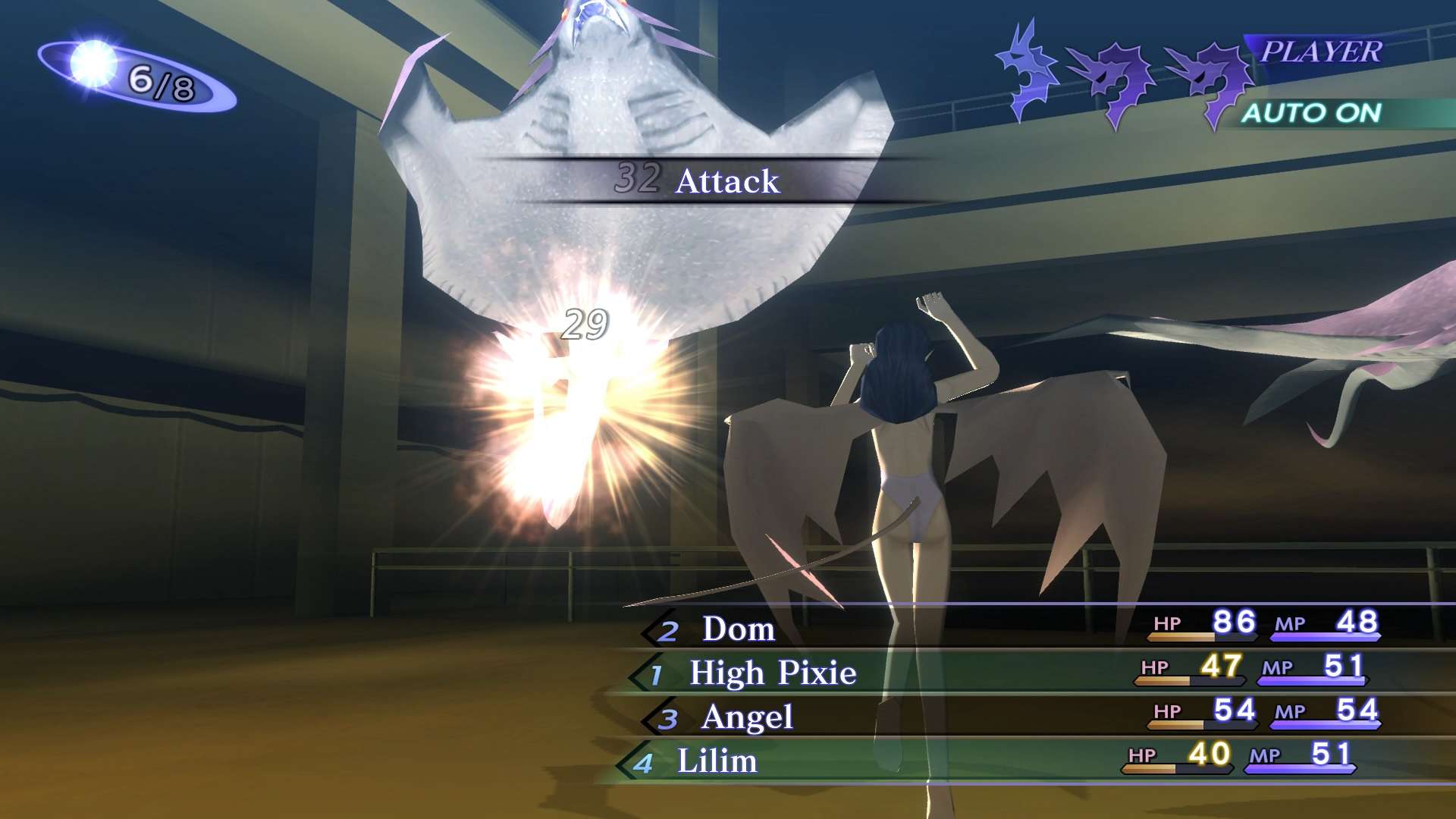
This gets me onto the HD Remaster element. Existing fans all know about the game and are more concerned about how this HD Remaster has been treated. Well, it is kind of a mixed bag, especially when it comes to the PC version. Let us get the bad things out of the way first. This game is locked to 30FPS on the PC, which is such a bizarre thing to do. I do not know the decision why, but a game like this should have no issue pushing double the frame rate. Persona 4 Golden released last year on PC, a port of a Vita game, and that had 60FPS, while the Vita ran at 30FPS. The resolution, while going up to 4K in the options, seems to only be for the UI and menus, as the actual models do not seem to render higher than 1080p. Of course, fans have managed to mod this to render the entire game at 4K – again, why is this not a default thing to have in the game? It is a little baffling. The music still remains compressed from the PS2 version, which is a huge shame, as the soundtrack is brilliant, but sadly they did not decide to replace it with a better quality version.
The last bad thing is the price. While, for me, price does not alter my review score, it does have to be mentioned that the default price is £44.99, while if you want to have the Dante DLC (probably to cover the cost to pay Capcom again for the rights), then you need to pay another £7.99. To get everything, such as Dante and the additional music tracks from other games and a couple of new map packs to gain items, then there is a Deluxe Edition for £54.99. That is a big rise in price compared to the Persona 4 Golden port, which released at under £20. I would understand if this was a full-blown remake, but it is a remaster, and one that does fall short of some of the quality of love that other remasters have had. To me, it feels like Shin Megami Tensei III Nocturne HD Remaster was a way to get the game to be available on current systems and PC, as it was only available on the PS2. One positive thing is that this does nicely have all three versions of the game, the original Japanese release, the Western release with Dante and the updated Raidou Kuzunoha XIV release that replaces Dante with the Devil Summoner: Raidou Kuzunoha protagonist. It is just a shame it is so damn expensive for what it is.
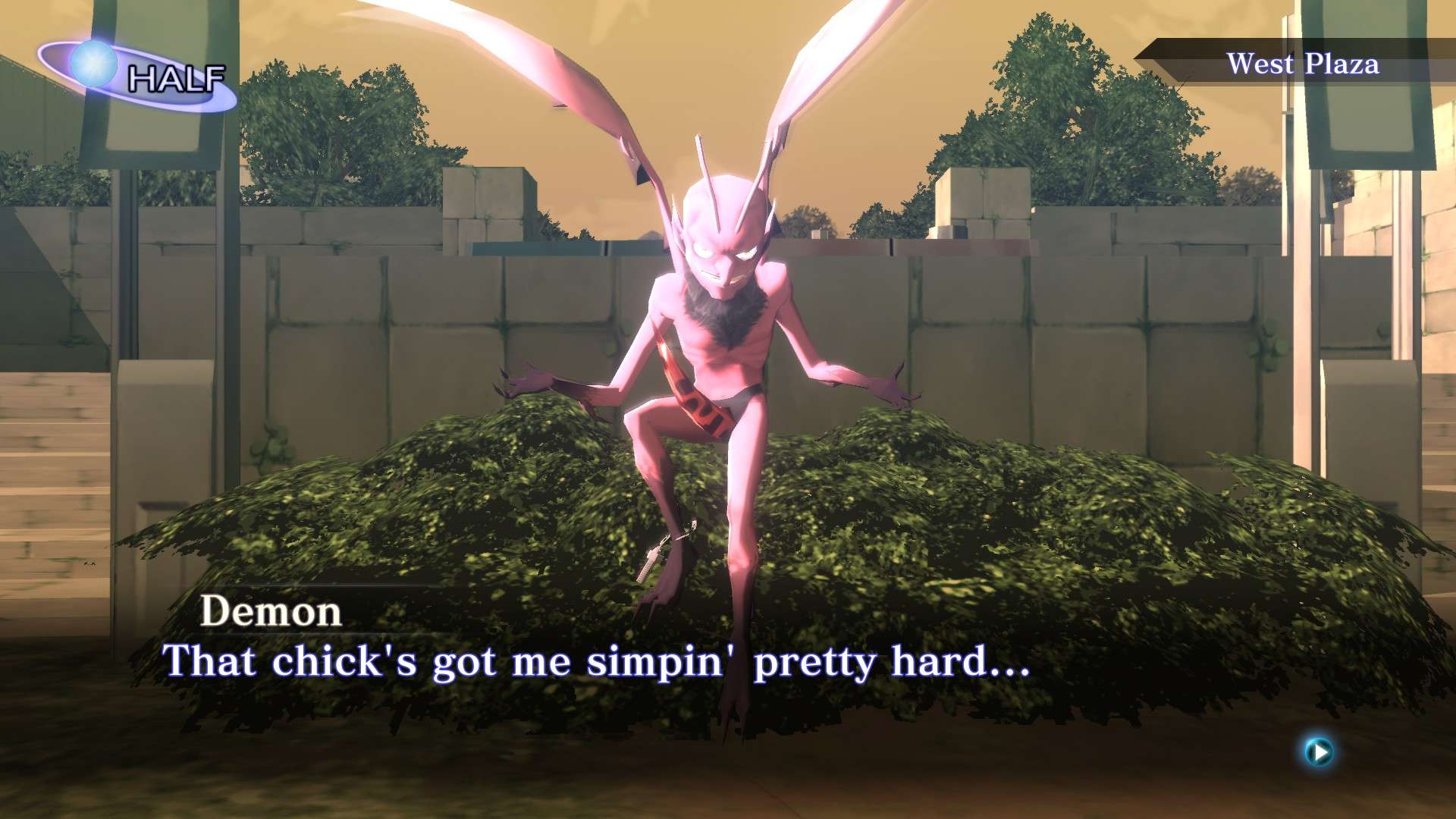
There are some positives that have been introduced. The big addition is story scenes now have voice-over, in both English or Japanese. It does seem a little random at times. Scenes I would have expected to have voice did not. Voice acting is fine, but nothing that would be put as a great performance. Some extra quality-of-life features are much welcomed too. The game can now be suspended saved, in essence allowing a person to save the game anywhere and return and continue later. There is a new easy difficulty to let people play for the story. Fusing demons now lets the player pick the skills they want to bring over, rather than it being random like it was in the original. All neat stuff.
Even with my gripe with this release, this is still the best version of Shin Megami Tensei III: Nocturne, and so that within itself is a recommendation to play the game. This is a minimal remastered release of a great cult Japanese RPG that still has a distinct story, setting and theme, with entertaining and challenging combat. It might be a bit too old school for some, but for fans or people who want to flesh out the Atlus RPG catalogue and see some of their history, then they will get to experience a special mature JRPG that holds up through its strong core mechanics. It is just a bummer that more has not been done with the remaster treatment, as this game deserves to be treated with more love.
